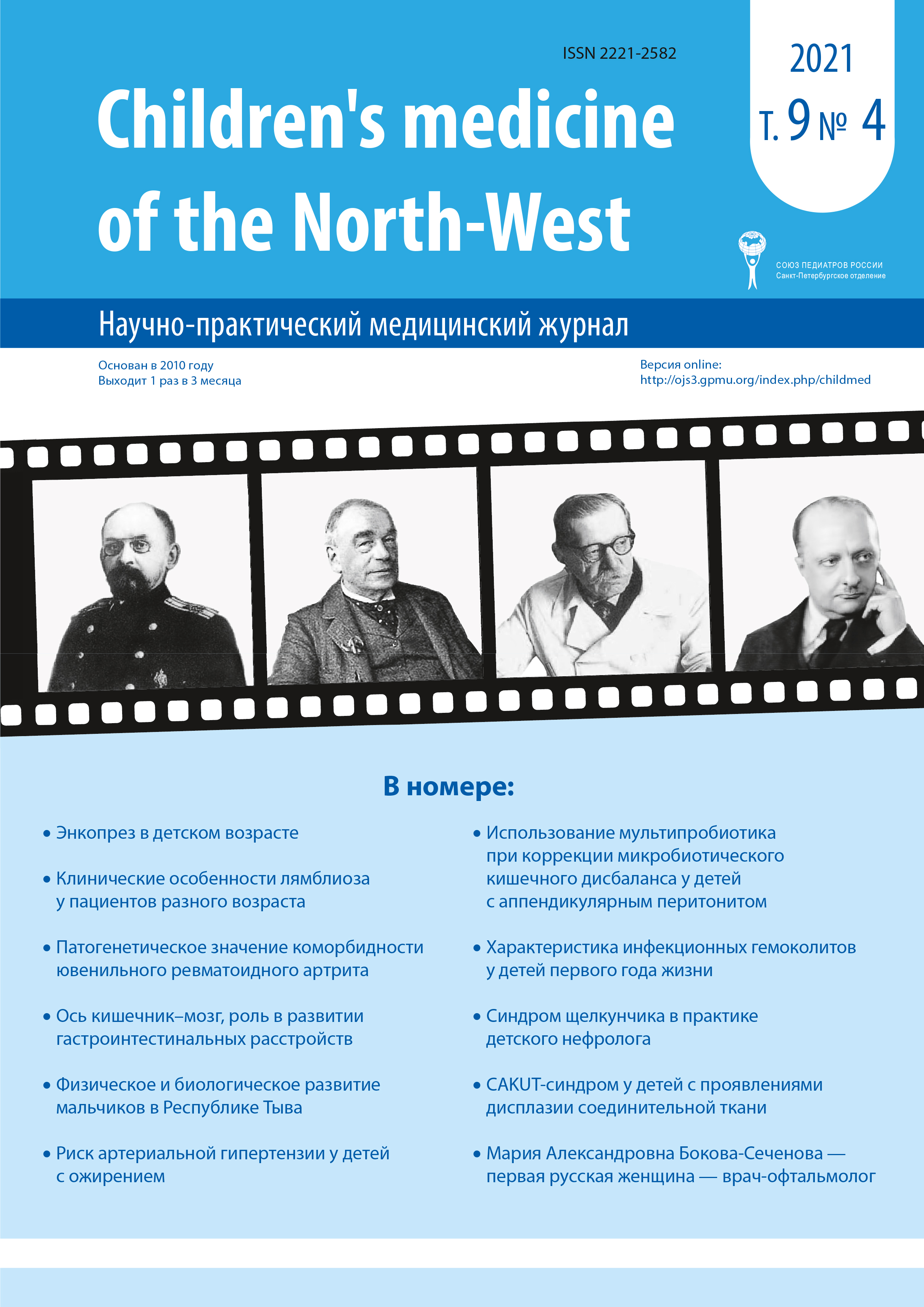CLINICAL FEATURES OF GIARDIASIS IN PATIENTS OF DIFFERENT AGES
Abstract
The agent of lambliosis Lamblia intestinalis (also known as Giardia lamblia, Giardia intestinalis) is a protozoan organism. Lambliosis is a protozoan disease with a clinical spectrum ranging from asymptomatic carriage with spontaneous elimination of parasites, to manifestations with severe enteritis and visceral organ involvement. Lambliosis occurs worldwide. Children become infected with lambliosis from the time of infancy, and the incidence of lambliosis in children is 2-5 times higher than in adults. Here, we describe in detail the clinical manifestations accompanying giardiasis in children, namely intoxication and vegetative disorders, gastrointestinal tract lesion, dermatological signs, toxic allergic and malabsorption syndrome. The clinical picture of lambliosis is shown to depend on the age of the patient. As the typical symptoms of the disease are often absent, it is possible to make an accurate diagnosis only with the use of laboratory tests.



